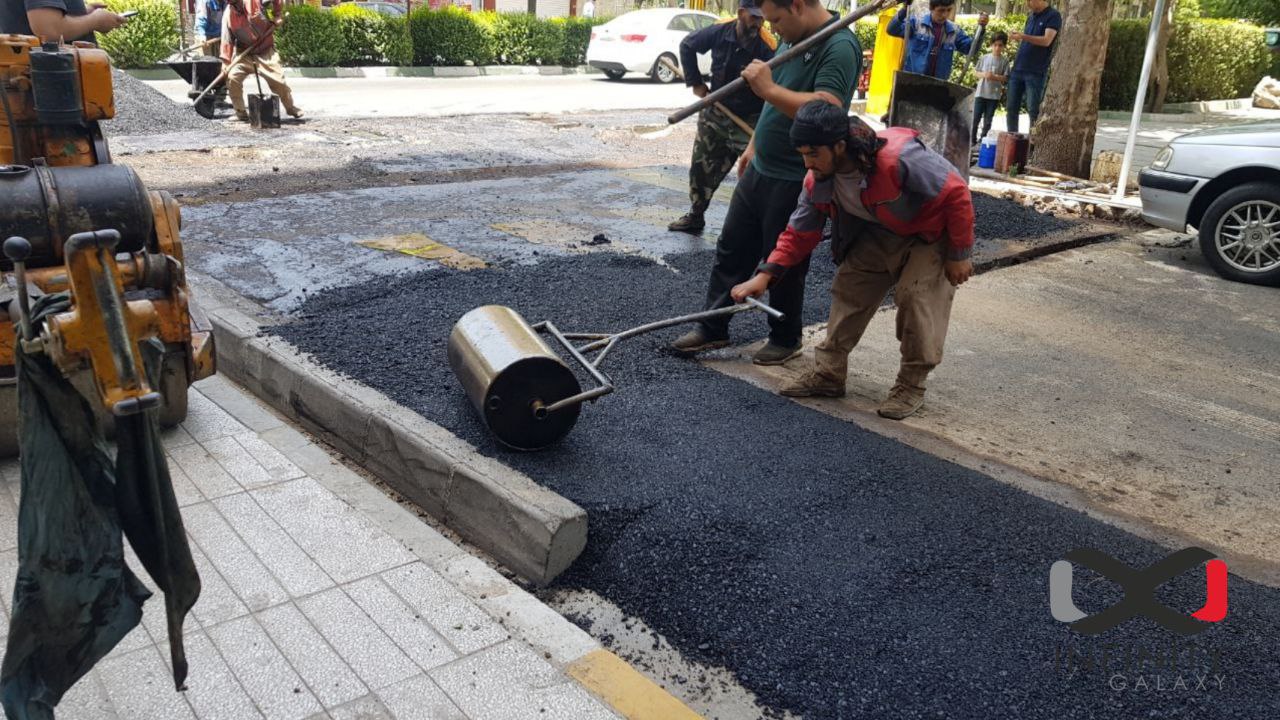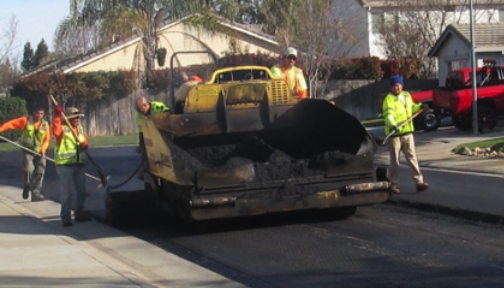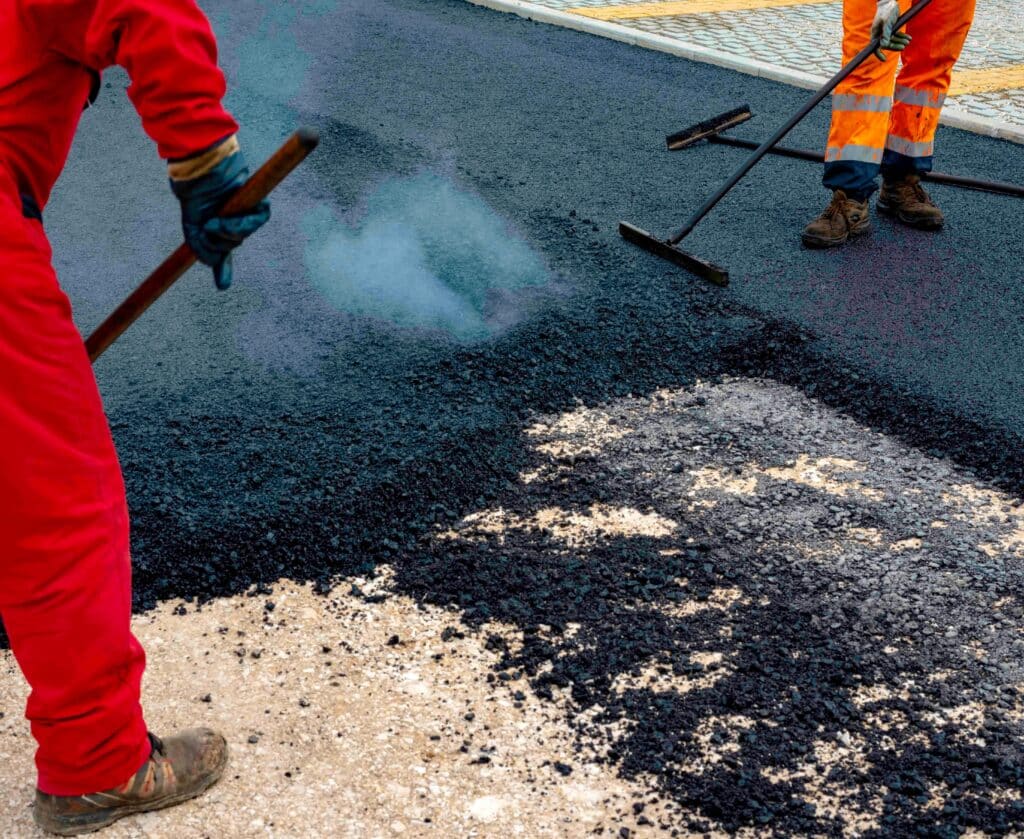Unlocking the Secrets of Hot Mix Asphalt Technology
Discovering the depths of warm mix asphalt innovation uncovers a globe where accurate formulations and thorough processes assemble to shape our roadways and infrastructure. The blend of accumulations, fillers, and binders isn't merely a building and construction task yet a tactical orchestration of longevity and performance.
Importance of Hot Mix Asphalt
Warm Mix Asphalt plays an important function in contemporary infrastructure advancement due to its sturdiness and cost-effectiveness. As the most typically used paving product for roadways, freeways, and parking area, Hot Mix Asphalt uses a series of benefits that add to its value in building jobs. One vital advantage is its capability to stand up to heavy website traffic loads and extreme weather conditions, supplying a durable and dependable surface for transportation networks. Furthermore, Warm Mix Asphalt is cost-effective in both initial building and long-lasting upkeep, making it a recommended choice for many facilities jobs.
The toughness of Warm Mix Asphalt comes from its structure, that includes aggregates, binder, and filler materials that are carefully selected and blended to fulfill certain performance requirements. This accurate combination causes a solid and versatile sidewalk that can sustain regular use without substantial deterioration. Furthermore, Hot Mix Asphalt is 100% recyclable, more improving its sustainability and environmental benefits. Overall, the importance of Warm Mix Asphalt in facilities development can not be underrated, as it remains to be a cornerstone of modern-day building practices.
Components of Asphalt Mixes
The make-up of asphalt mixes contains carefully picked aggregates, binder, and filler materials that are crucial for accomplishing details performance requirements. Aggregates are the primary part of asphalt blends, offering strength and stability. These accumulations can be natural, such as gravel or smashed stone, or synthetic, like recycled products from old sidewalks. The binder, usually asphalt or asphalt cement, holds the aggregates with each other and provides versatility and longevity to the mix. The selection of the binder is vital as it straight influences the mix's performance in various climate conditions. Fillers, such as hydrated lime or Portland concrete, are made use of to boost the mix's workability and aging resistance. Angled Parking.
The combination and percentage of these elements play a substantial duty in establishing the top quality and efficiency of the asphalt mix. Designers meticulously make the mix to fulfill details needs, taking into consideration variables like website traffic quantity, climate conditions, and pavement lifespan. Correct option and harmonizing of aggregates, binder, and fillers are vital for producing resilient, long-lasting asphalt pavements.
Combining and Manufacturing Methods

When the aggregates are selected, the binder, typically asphalt cement, is added to bind the materials together. The Get the facts binder's quality and quantity significantly impact the mix's resistance, toughness, and adaptability to environmental elements. Additionally, fillers like hydrated lime or Rose city concrete may be incorporated to enhance details features of the asphalt mix, such as its workability or dampness resistance.
During production, the accumulations and binder are heated up, normally between 250-325 ° F(121-163 ° C ), to assist in mixing and ensure correct covering of the accumulations. The mixing procedure should be comprehensive to achieve an uniform combination that advertises the preferred performance features of the asphalt. Various methods, such as batch mixing or drum blending, are employed to achieve high-quality and constant asphalt mixes for building and construction projects.
Factors Impacting Asphalt Performance
Elements affecting asphalt efficiency encompass a range of variables that affect the longevity, longevity, and general top quality of asphalt sidewalks. One key element is the high quality of products made use of in the asphalt mix.

Layout factors to consider, such as sidewalk thickness and drainage, are important in making sure the long-lasting efficiency of the asphalt sidewalk. By very carefully taking into consideration these engineers, factors and contractors can maximize asphalt performance and improve the service life of sidewalks.
Sustainable Practices in Asphalt Modern Technology

WMA enables for the production and placement of asphalt blends at lower temperatures contrasted learn this here now to conventional hot-mix asphalt, resulting in minimized energy usage and greenhouse gas exhausts. The use of porous asphalt blends can help reduce stormwater runoff concerns by allowing water to penetrate via the pavement and into the ground, advertising all-natural water filtration and charge procedures.
Verdict
In final thought, warm mix asphalt modern technology plays a crucial role in modern facilities advancement because of its toughness and cost-effectiveness. By meticulously stabilizing parts, using correct blending strategies, and taking into consideration numerous variables, designers can develop high-grade asphalt blends that stand up to hefty web traffic tons and severe climate condition. Embracing lasting techniques, such as making use of warm-mix innovations and recycled materials, further boosts the ecological friendliness of asphalt technology.
Blending and production techniques in warm mix asphalt modern technology include the accurate mix and handling of aggregates, binder, and fillers to develop a sturdy and high-performance asphalt mix.Elements affecting asphalt efficiency encompass an array of variables that affect the sturdiness, longevity, and total high quality of asphalt sidewalks. Sustainable practices in asphalt modern technology encompass numerous efforts intended at decreasing the ecological impact of asphalt manufacturing and paving processes. By incorporating redeemed asphalt pavement (RAP) and recycled asphalt roof shingles (RAS) right into brand-new asphalt blends, the industry can considerably minimize the usage of raw materials and power, while likewise decreasing land fill waste.
WMA enables for the manufacturing and positioning of asphalt mixes at lower temperatures contrasted to traditional hot-mix asphalt, resulting in minimized energy intake and greenhouse gas emissions.
Comments on “Reimagine Your Space: Hot Mix Asphalt Paving for Angled Parking Lot Projects”